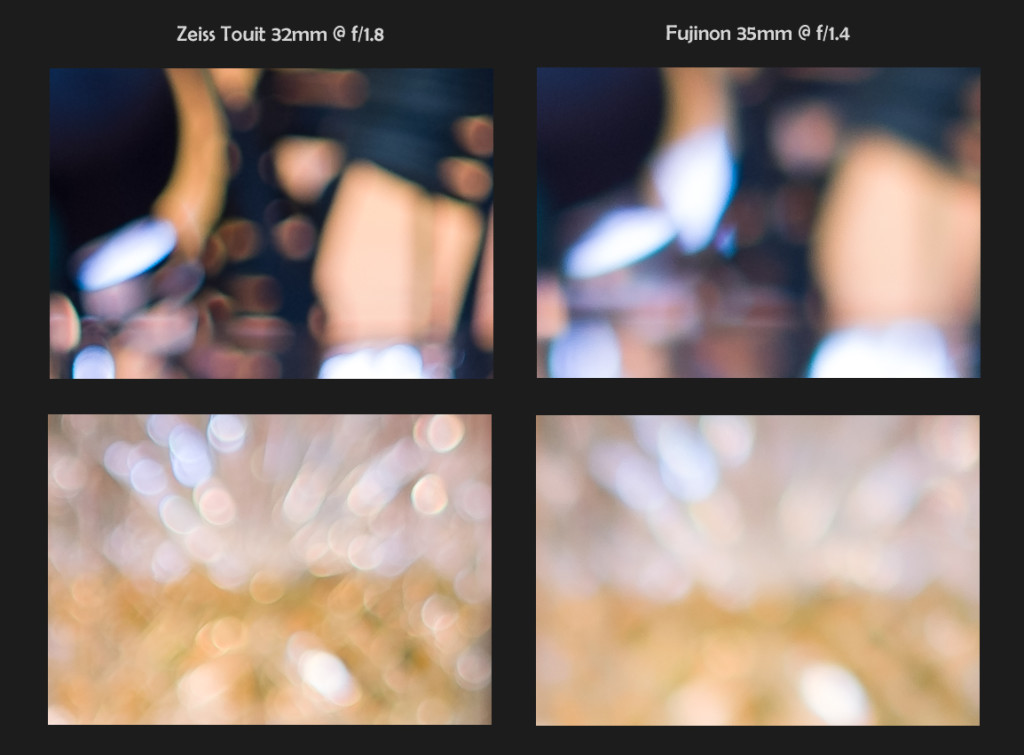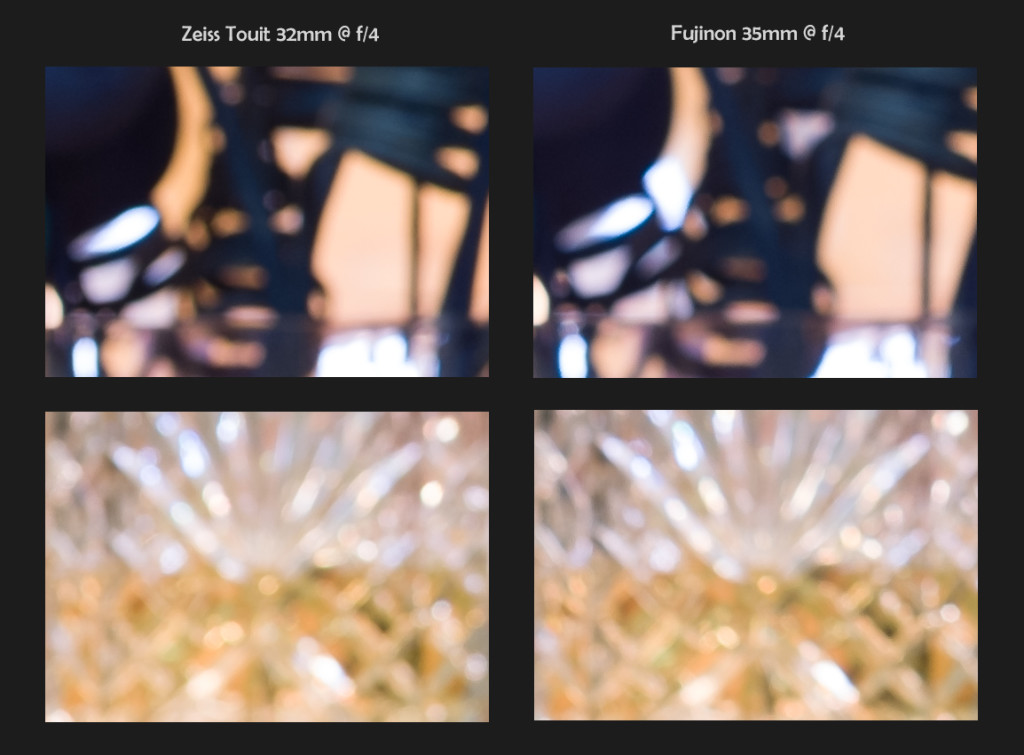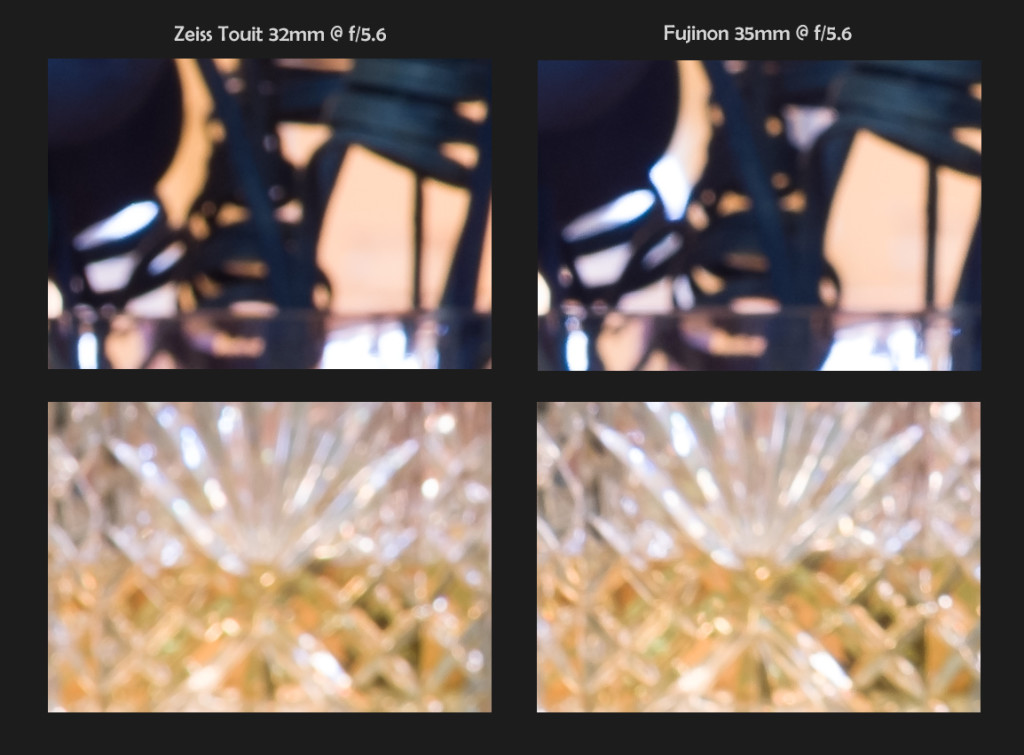Bokeh
The last thing we’ll look at today is how each lens renders out of focus areas. As I mentioned earlier, I took crops from two areas: the crystal decanter and the wooden sticks in the vase.

With both lenses wide open, you can see that, as we’d expect, the Fuji shows considerably more blur due to the larger aperture. However, it not only shows more blur, but the bokeh is significantly more pleasing as well. Specular highlights on the decanter are very smooth and soft, while the busy sticks area shows soft blobs of color.
The Touit on the other hand, has some harsher rings around specular highlights, while color rings and fringes show in a much more busily rendered scene with the sticks.

With both lenses at f/1.8, the Fuji continues to show superior bokeh to my eye, with a much more neutral rendering and softer specular highlights. The Zeiss simply shows some nervousness at this wide aperture, though it’s not a terrible showing.

At f/2.8 and smaller, something interesting happens: the Zeiss softens up in the out of focus areas. Bokeh becomes much more neutral at smaller apertures, and to my eye, is extremely similar to the Fuji. This continues for the f/4 and f/5.6 crops, seen below.


In the bokeh challenge, I have to give a nod to the Fujinon XF 35mm f/1.4. The wider aperture not only allows for more blurring and subject separation, but the lens renders out of focus areas much more smoothly than the Zeiss does at wide apertures. At smaller apertures, the lenses are extremely close to one another.
Conclusion
So who wins? Well, unlike the comparison I did between the Touit 12mm and the Fuji 14mm, there isn’t a clear-cut winner. Which lens is better really is going to come down to how each person will use it and what aspects they value more.
Both lenses are tack sharp in the center at all apertures. The Zeiss has a significant advantage on the edges and corners at wide apertures, but the Fuji has a clear advantage on the edges and corners at small apertures. Bokeh is a little better on the Fuji to my eye, but that’s a very subjective measure.
I personally would give the edge to the Fuji 35mm, as I find the better larger aperture bokeh and superior stopped down edge and corner resolution to fit my style of shooting much better. However, if you’re someone who shoots in limited light situations and needs sharpness across the frame at wide apertures, then the Zeiss may be the clear-cut winner.
The $1,000 price tag for the Zeiss Touit may be the deciding factor, as it really is difficult to see an extra $400 in value simply for better larger aperture edge performance, though again, that will be up to each individual shooter.
Check out my full review of the Zeiss Touit 32mm f/1.8. That review features shooting in a variety of situations and a much more in-depth look at the Touit 32mm.





Leave a Reply